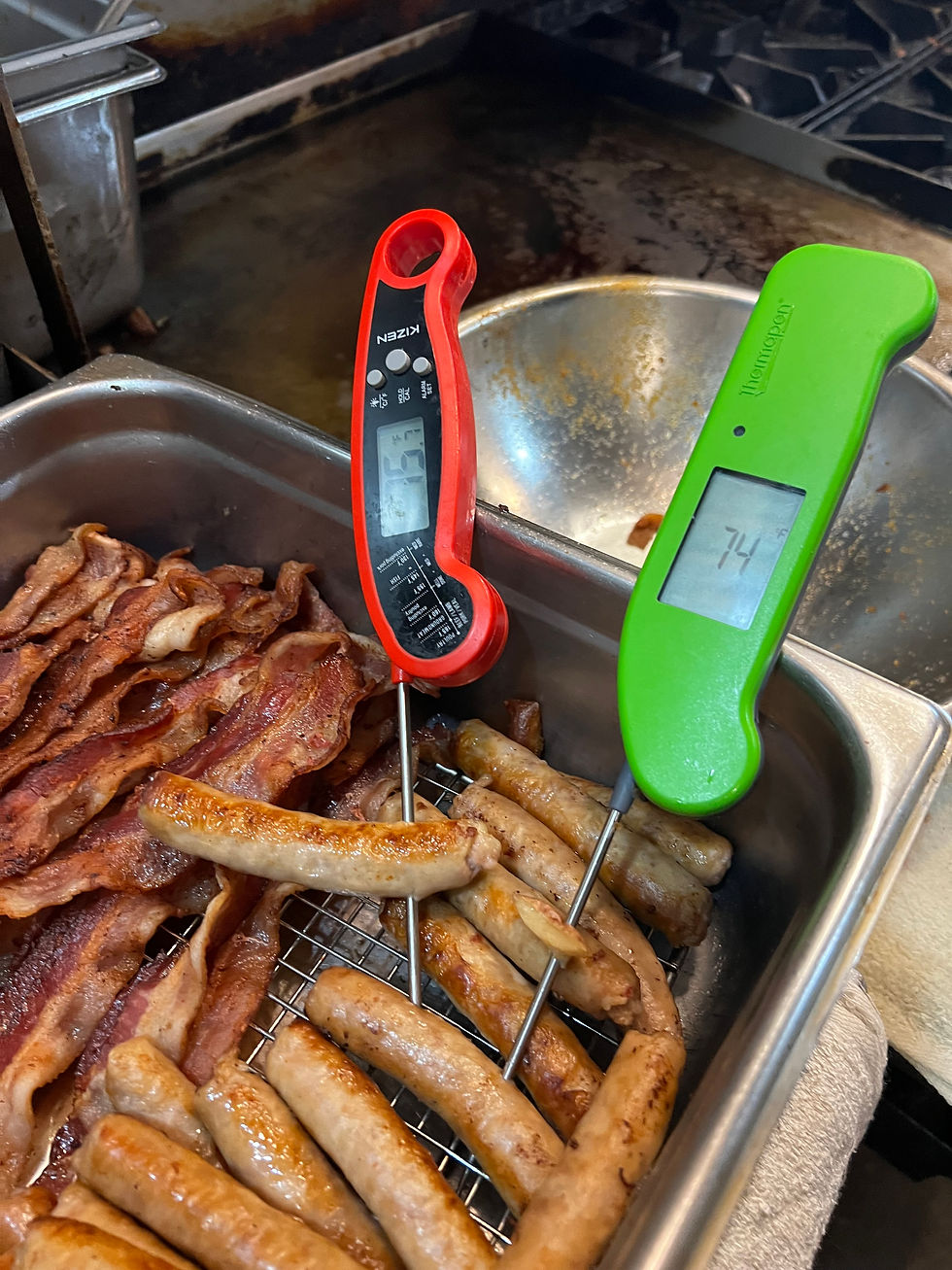Safety and Savory: An Overview to Master the Art of Gravlax without Compromising Food Safety!
- mcfoodsafety
- Mar 3, 2023
- 2 min read
Updated: May 9, 2023
By Zoe Mackey

You’ve seen and maybe eaten a lot of lox, also known as gravlax or cured raw salmon, around Portland. Now you want to include it on your menu, but what food safety steps do you need to cover?
Decide if you want to have wild caught or farmed fish. Both need a letter of compliance that includes which one is used. The letter of compliance from the supplier will describe the fish species and the parasite destruction process. The parasite destruction process applies to wild caught fish. Basically, the supplier ensures the fish is frozen for the correct amount of time and temperature. You'll need to make sure the letter of compliance matches the invoice of the salmon you're using. The Oregon Food Code allows operators to use parasite destruction by a supplier, or you can do it yourself.

Using a supplier: Keep a copy of the letter (shown above) available to show an inspector. Ensure the letter is for the current year and matches the fish species you’re serving.
In-house parasite destruction: There are two potential minimums, Option 1) freeze and store at -4℉ (-20℃) or below for 7 days continually. Option 2) freeze and store at -31℉ (-35℃) or below for 15 hours.
You can only use a commercial unit that is able to continually stay below these frigid temperatures. Home-style units typically have a freeze-thaw cycle that will deviate above -4℉ and -31℉.
Keep a daily temperature log and any records for 90 days, and be ready to present these at an inspection. Do not rely on the external, digital thermometer on the freezer unit. Put one in the freezer.
Lastly, make sure to date mark the packaging, so you can demonstrate you’re following the procedure correctly.
2. Yes, we confirm that 7-day date marking does apply to lox. Once that fish is fully cured, that is considered day 1. If the product is fully cured on 3/3/23, then it needs to be used or disposed of on 3/9/23.
3. Ensure you include a consumer advisory. There are 2 parts to this step. First is the disclosure. This can be a written statement, like “cured raw salmon” or the more commonly used asterisk, bagel with lox*. This lets the customer know that something is undercooked. If an asterisk is used, a reminder must be included as a footnote to explain what the asterisk means. An example would be, *Consuming raw or undercooked meats, poultry, seafood, shellfish or eggs may increase your risk of foodborne illness.
Now you may be wondering, why do we care? The reason is customers may be unaware of what a dish is and how it is prepared. Overall, eating raw or undercooked food increases everyone’s chances at experiencing foodborne illness, especially people with medical issues. The asterisk and message at the bottom of the menu is an easy way to increase public awareness.
You can find a complete fact sheet on this topic here.



Comments